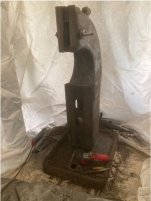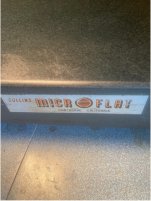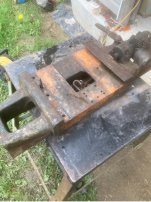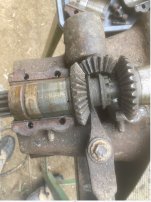Hello gang.
I always wanted vertical mill with drilling capabilities - something like BP or its clones. I do have a nice mid-sized universal mining machine, but it has fixed spindle which makes centering/drilling/tapping operations awkward.
Having very limited budget it was difficult to justify new mill so I found something that will fit my pocket and will probably work as a milling/drilling machine.
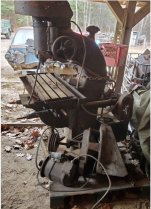
I found this Becker No 3 -as you can see from photo - looks like terrible condition, but mechanically is quite OK. Spindle has very little runout and can be rebuild if needed, ways are OK'ish. Nothing is broken or cracked. So, I picked it up. It is surely old and worn and require lot of cleaning and repainting and adjusting. Unfortunately , I don't have any straight edges or "camelbacks" to validate geometry of the ways and slides. So no scraping this time.

I brought it home laying down on two pallets and moving into workshop
had to build a special structure inside workshop to support standing it up.
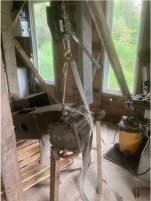
Here is rising moment - some safety wooden pieces and come-along.
Here is close-up on spindle
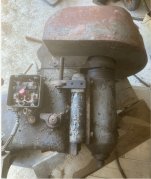
It receives a R8 collets - which is quite convenient.
So this summer I will spend working on this new addition on my shop. Any information of this milling machine - charts, drawings, tuning/reconditioning info will be greatly appreciated.
P.S. If somebody in the area or surroundings will be able to loan a straight edge or camelback - I will gladly borrow it for some time. We can discuss terms and I am usually good with returning stuff without damaging it
I always wanted vertical mill with drilling capabilities - something like BP or its clones. I do have a nice mid-sized universal mining machine, but it has fixed spindle which makes centering/drilling/tapping operations awkward.
Having very limited budget it was difficult to justify new mill so I found something that will fit my pocket and will probably work as a milling/drilling machine.

I found this Becker No 3 -as you can see from photo - looks like terrible condition, but mechanically is quite OK. Spindle has very little runout and can be rebuild if needed, ways are OK'ish. Nothing is broken or cracked. So, I picked it up. It is surely old and worn and require lot of cleaning and repainting and adjusting. Unfortunately , I don't have any straight edges or "camelbacks" to validate geometry of the ways and slides. So no scraping this time.

I brought it home laying down on two pallets and moving into workshop
had to build a special structure inside workshop to support standing it up.

Here is rising moment - some safety wooden pieces and come-along.
Here is close-up on spindle

It receives a R8 collets - which is quite convenient.
So this summer I will spend working on this new addition on my shop. Any information of this milling machine - charts, drawings, tuning/reconditioning info will be greatly appreciated.
P.S. If somebody in the area or surroundings will be able to loan a straight edge or camelback - I will gladly borrow it for some time. We can discuss terms and I am usually good with returning stuff without damaging it








